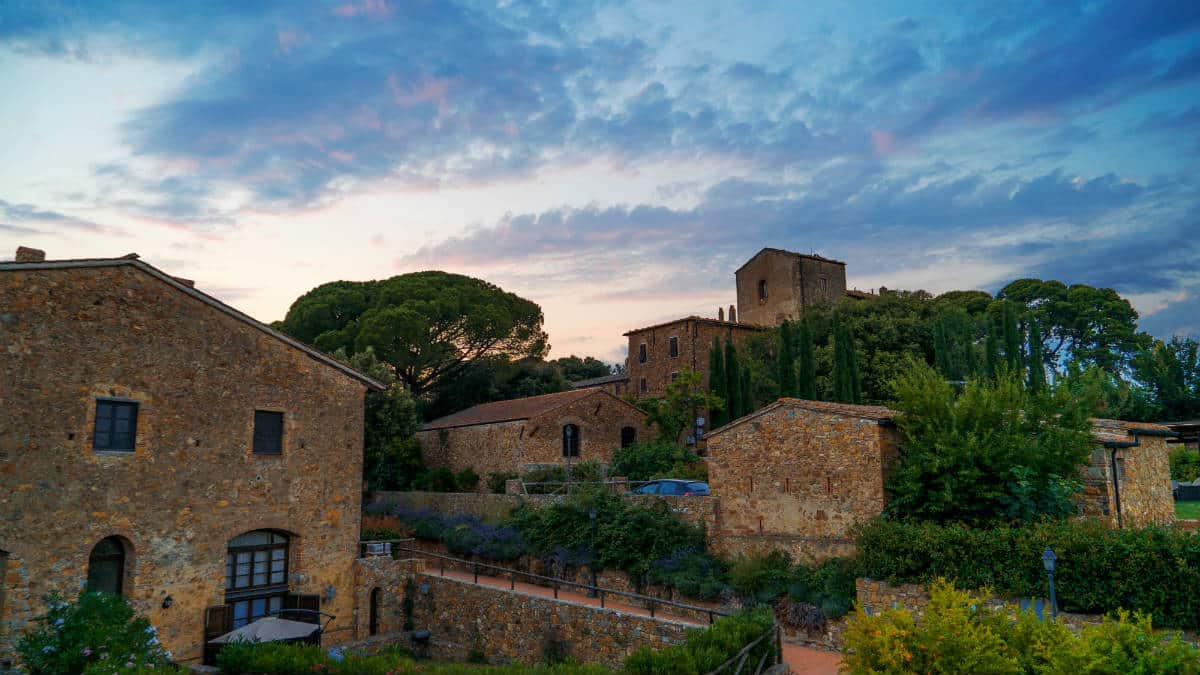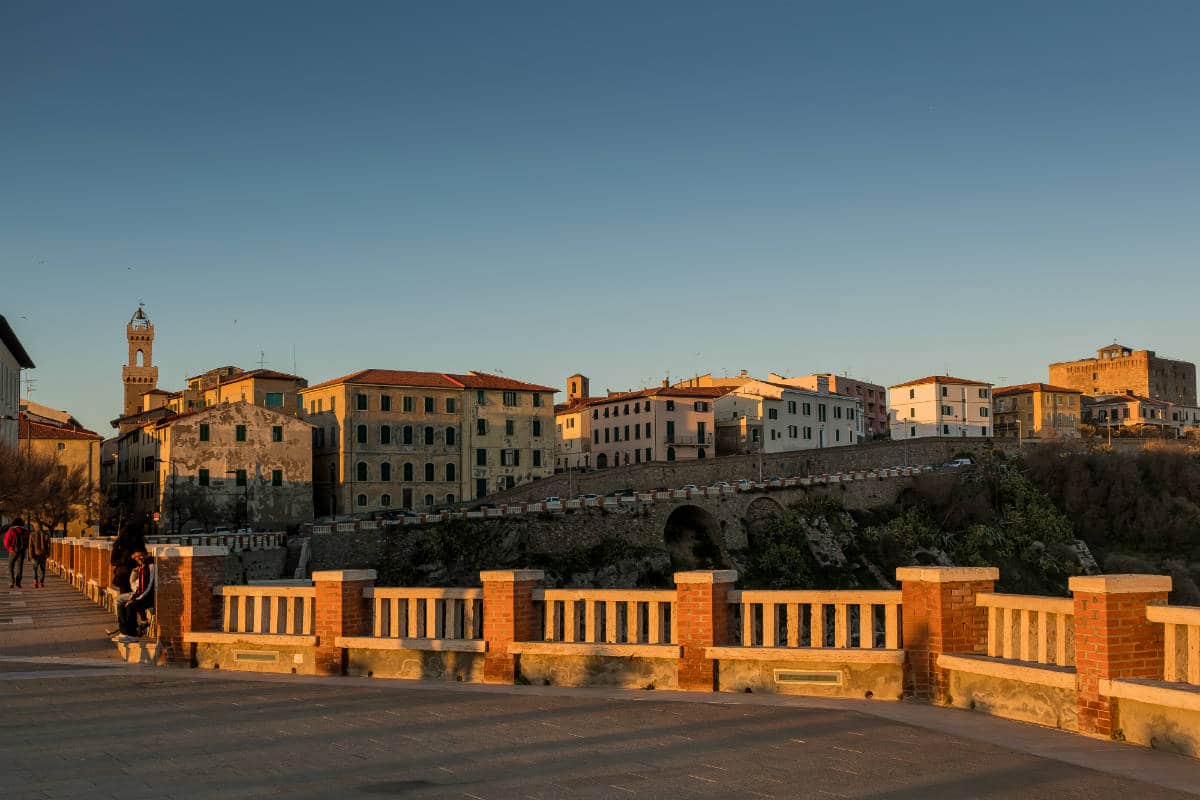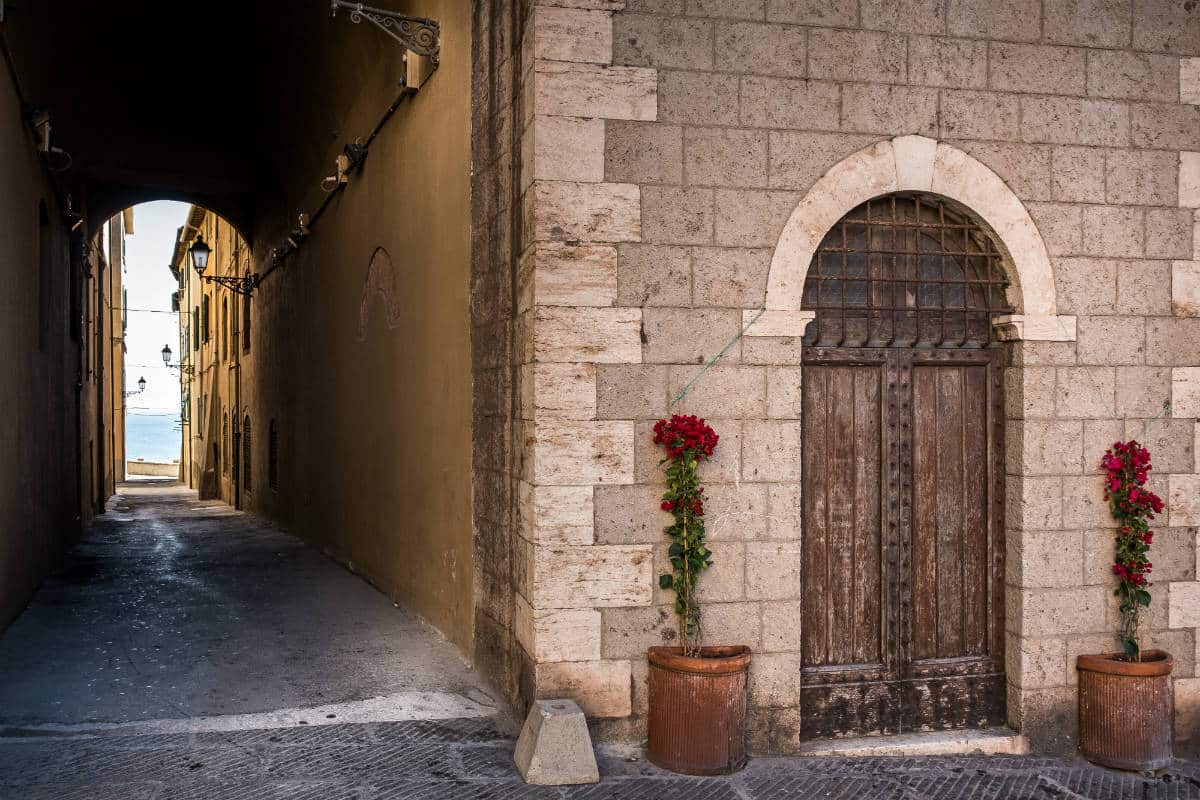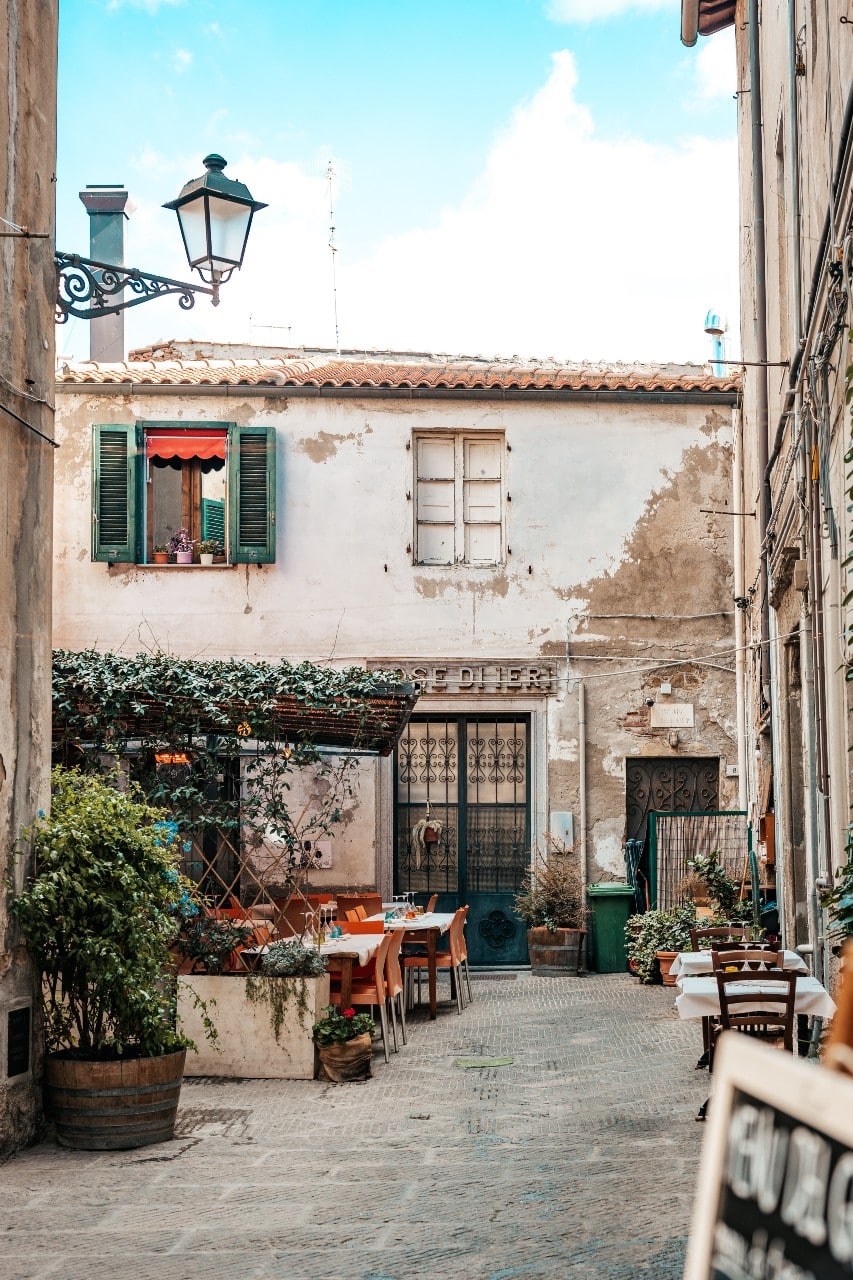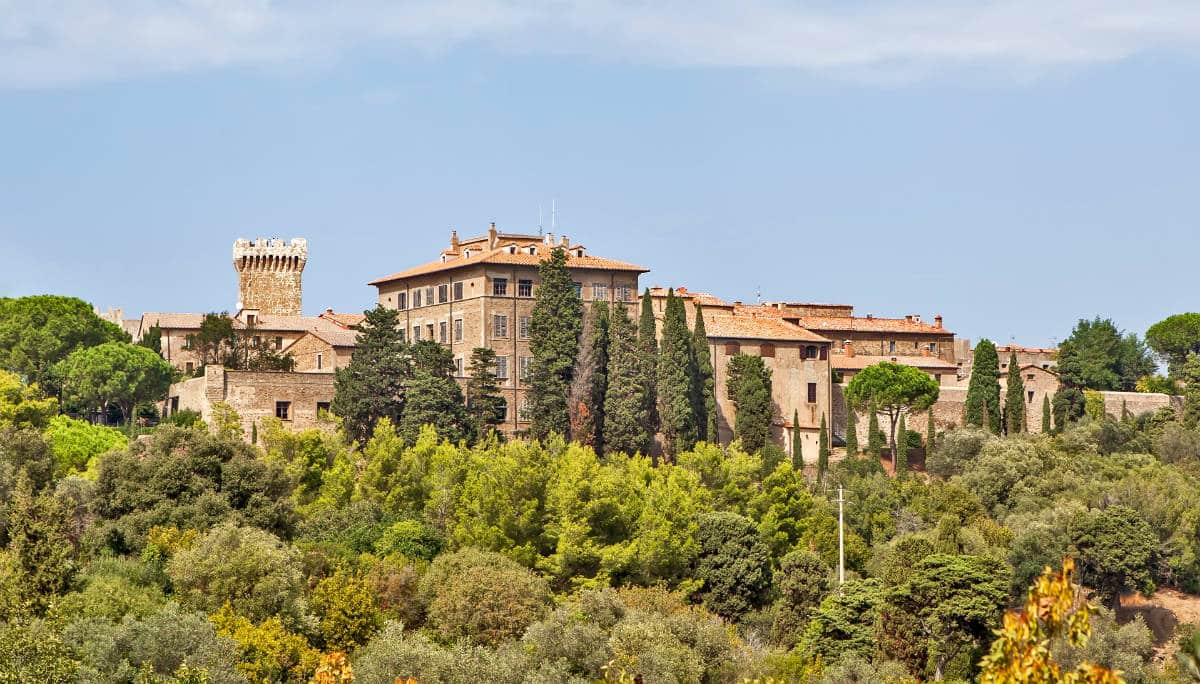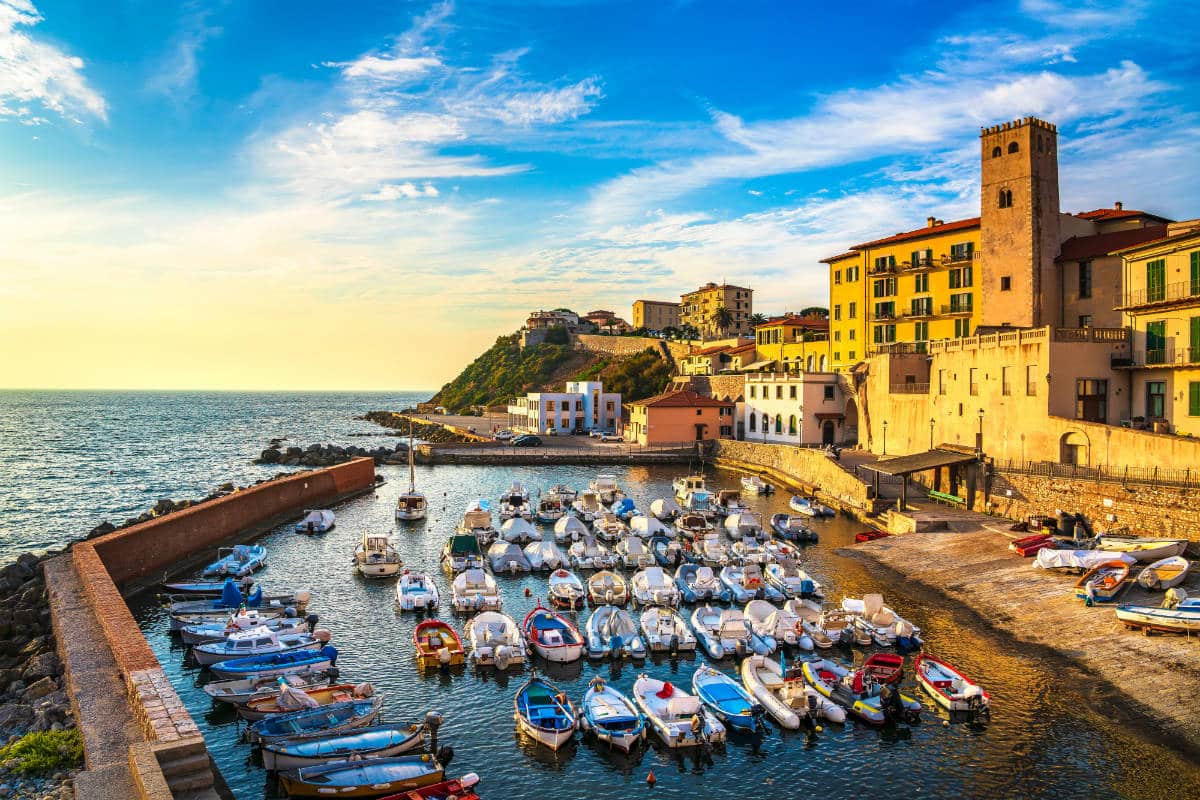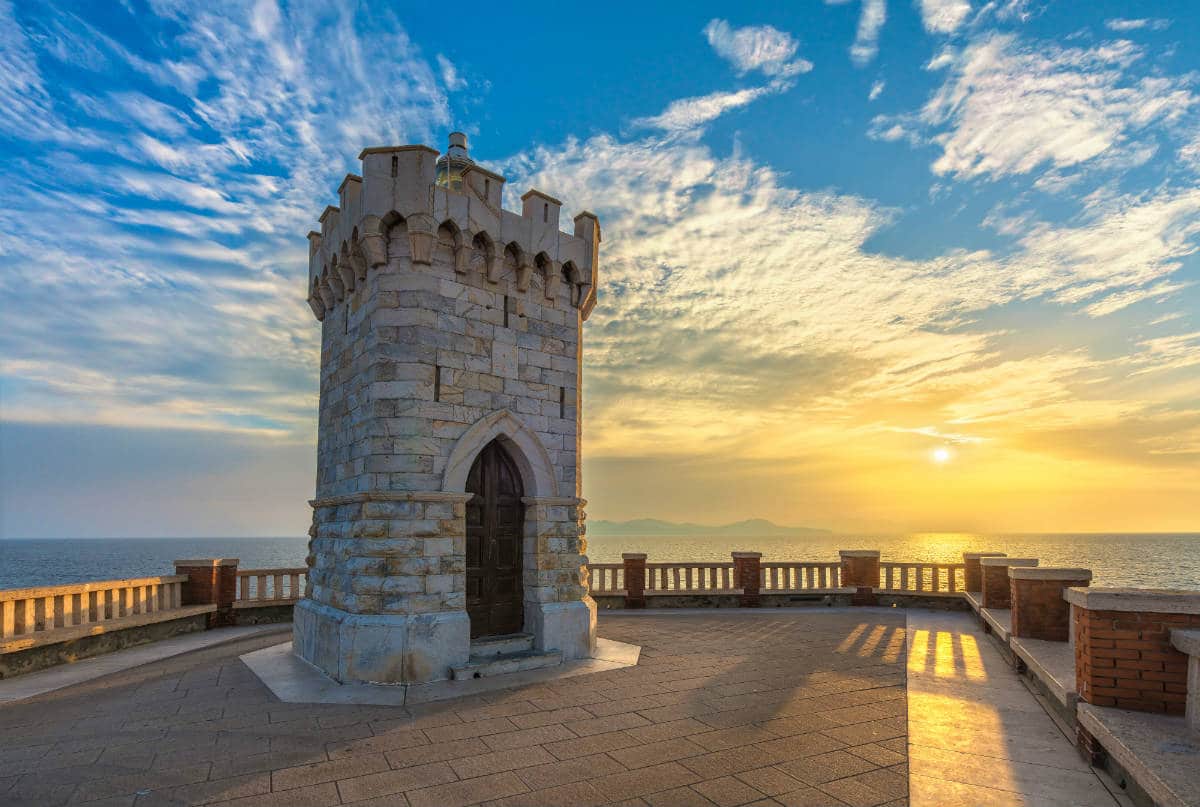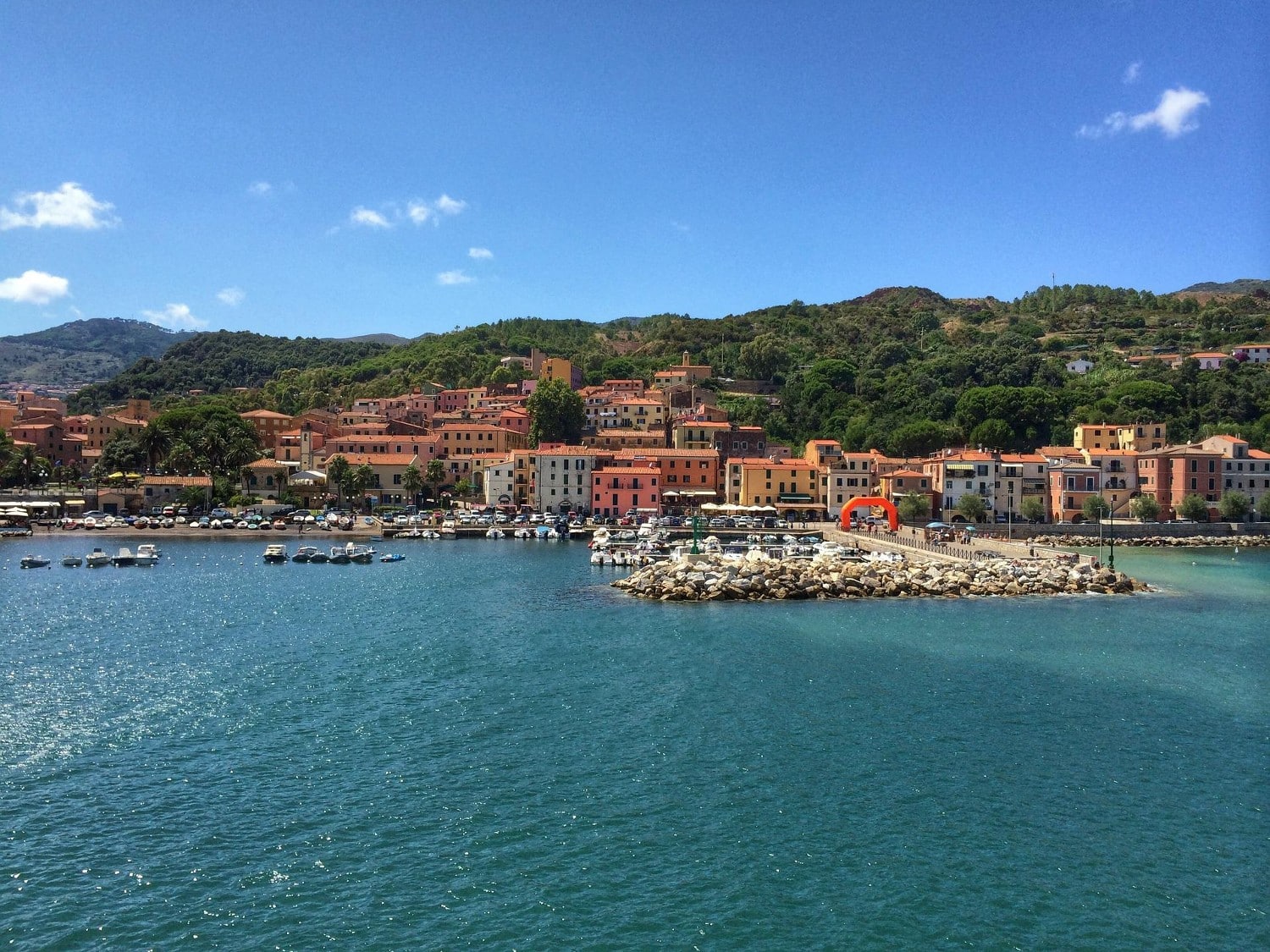Its long history can be known through the architectural monuments and works of art that are preserved in the historic center, whose splendor was also contributed by Leonardo da Vinci and Andrea Guardi.
The first settlements date back to the Etruscan era, when Populonia, the most important port city of the Etruscan Dodecapoli, was founded on the north side of Mount Massoncello on the promontory of Piombino, where the ancient Porto Falesia was located. Later the territory was Romanised and for centuries it has had the same history of the Roman Etruria.
Among the numerous architectural proofs of the past there are the oldest monuments of the village, the Torrione, or the ancient gateway to the city, also called the door of Sant'Antonino and the Rivellino, built next to the tower, with a military protective function for the area.
The Port of Piombino, considered internationaly famous, is included in the motorways of the sea. It is an important cargo terminal and it is equipped with large docks and industrial platforms, whose main activity is however that of passenger handling.
The main dishes of the tipycal cooking are mainly based on fish. The cuisine from Piombino is in fact known for its rich catch from the Tuscan seabed, coast and archipelago, especially crustaceans and molluscs, fine fish and blue fish. Among the typical dishes there are boiled octopus, stockfish with potatoes, cod alla livornese, anchovies alla povera, mullet and cacciucco alla livornese. Not only seafood but also land dishes, soups, game recipes (such as wild boar) and vegetables like violet artichoke are typical. But there are also typical dishes that naturally reflect the gastronomic tradition of other parts of the region such as tortelli, chickpea cake, fried artichokes, pasta and chickpeas, panzanella.
There are many wineries in the countryside of the village and this is why Piombino is part of the Città del Vino circuit.



